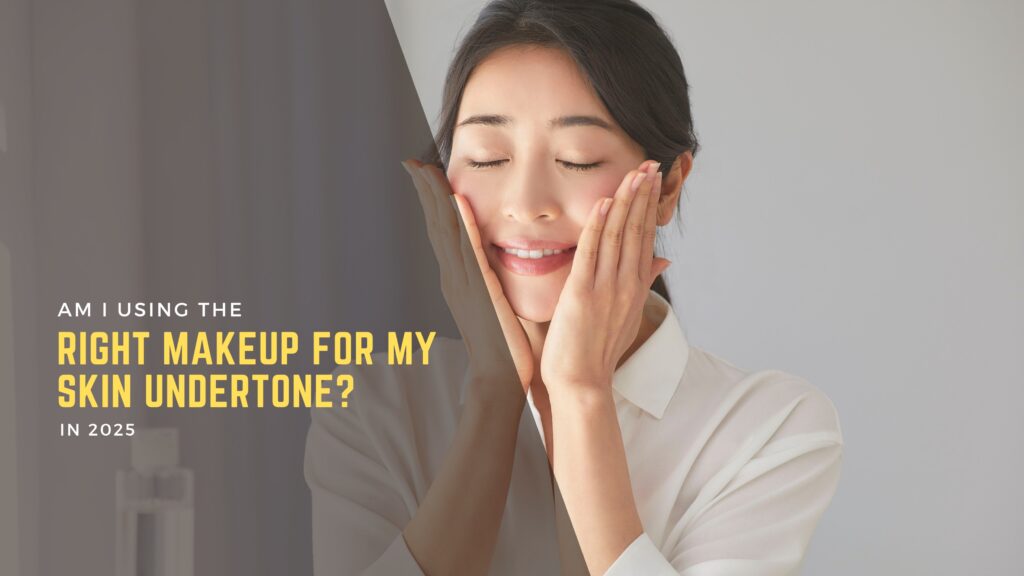
Have you ever applied the foundation that looked perfect, but once you stepped out, it felt very orange, very ash, or just wrong? Criminal products cannot be, but your skin
undertaking. Understanding your venture is the key to choosing the right makeup and skincare products. If you are serious about completing your beauty routine – or helping others to do so – it is necessary to go to the undertakings. What else? It is a major topic in our skin care training courses and professional skin care training at Cosmeza Beauty Institute. Let’s break all this down for you all.
What Are Skin Undertones?
Your skin tone is the surface color fair, medium, or deep, but your undertone is the subtle hue beneath that color. It never changes, even if you tan or get pale. The three main undertones are:
- Cool: Hints of blue, pink, or red
- Warm: Hints of yellow, peach, or golden
- Neutral: A mix of both cool and warm tones
At Cosmeza’s skin care classes for cosmetologist, we teach you how to accurately analyze skin types and undertones in clients so that makeup and skincare choices always complement them.
How to Find Your Undertone
If you’re not sure what your undertone is, try these tips:
1. Check Your Veins
Look at the veins on your wrist in natural light:
- Blue or purple veins? You’re cool-toned
- Greenish veins? You’re warm-toned
- Can’t really tell? You’re likely neutral.
2. Jewelry Test
Do you look better in silver or gold jewelry?
- Silver = Cool undertone
- Gold = Warm undertone
- Both = Neutral undertone
This is one of the first lessons in our skin care courses for beginners on how to use simple methods to read skin tones effectively.
Matching Makeup to Undertones
The biggest mistake most people make? Picking makeup based only on their surface skin tone. But if the undertone doesn’t match, the makeup never sits right.
Here’s what works best:
➤ Foundation
- Cool undertones: Choose foundations with a pink, red, or blue base
- Warm undertones: Look for golden, yellow, or peach bases
- Neutral undertones: Go for balance—not too pink, not too yellow
In our professional skin care training, students practice selecting foundations for all undertones, ensuring flawless results.
➤ Lipstick
- Cool tones: Berry, wine, mauve, and blue-based reds
- Warm tones: Coral, peach, orange-reds
- Neutral tones: Almost everything suits you!
Why It Matters in Skin Care Too
Your undertone affects how products appear on your skin, even skincare like tinted moisturizers or CC creams. Certain ingredients may also react differently on warm or cool-toned skin.
That’s why our skin care training courses dive deep into tone-matching, not just for makeup, but for product recommendation and skin prep.
For Aspiring Pros: Learn the Science Behind It
If you’re planning to enter the beauty industry, knowing undertones isn’t optional; it’s essential. At Cosmeza Beauty Institute, our skin care classes for cosmetologist include:
- Skin mapping
- Color theory
- Matching makeup to undertones
- Correcting uneven skin tone
- Personalized client consultations
Our professional skin care training goes beyond textbook theory, giving you real-world skills that clients trust and pay for.
Final Thoughts
Choosing the right makeup isn’t about trial and error; it’s about understanding your unique skin. Once you identify your undertone, you’ll unlock a whole new level of confidence in your makeup game.
And if you’re ready to go pro, we’re here to guide you. At Cosmeza Beauty Institute, our skin care courses for beginners, skin care training courses, and professional skin care training programs are perfect for beauty enthusiasts and future professionals alike. And if you’re already in the field, our skin care classes for cosmetologist will take your expertise to the next level.
Don’t just wear makeup, wear what flatters you. Let your skin do the talking.
FAQs:
1. I’ve done online quizzes, but still don’t know my undertone. What should I do?
Sometimes online tools aren’t enough. In our skin care courses for beginners, you’ll learn how to identify undertones through direct observation and consultation techniques that are more accurate than random quizzes.
2. What if my skin tone changes with the seasons?
Your undertone stays the same, even if your surface tone changes. That’s why learning how to match makeup based on undertones is part of our skin care training courses.
3. Can I wear makeup that doesn’t match my undertone?
You can, but it may clash with your natural coloring. That’s why professional artists trained through skin care classes for cosmetologist always consider undertones for the most flattering results.
4. What’s the difference between professional and beginner skincare training?
Skin care courses for beginners focus on the basics: skin types, product selection, hygiene, and an introduction to facial care.
Professional skin care training includes advanced treatments, in-depth skin analysis, and corrective skincare routines tailored to client concerns.
5. Is this taught in your cosmetology programs?
Absolutely! Our skin care classes for cosmetologist are part of the larger Cosmetology course. You’ll learn how to identify skin undertones and select makeup and skincare that enhance natural beauty.




